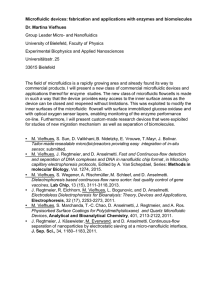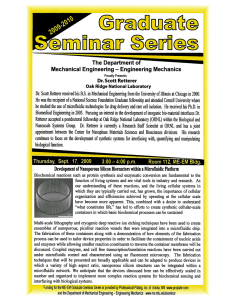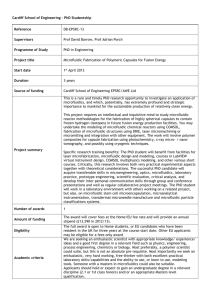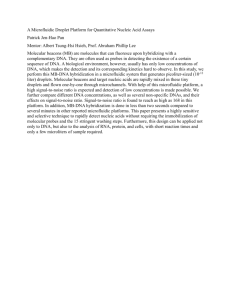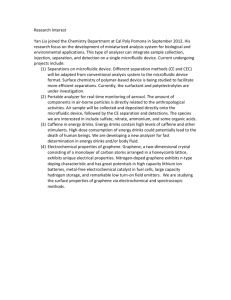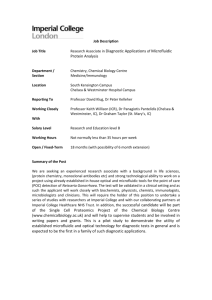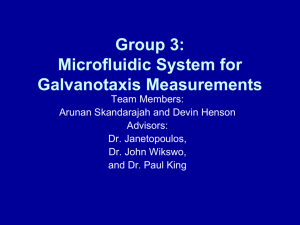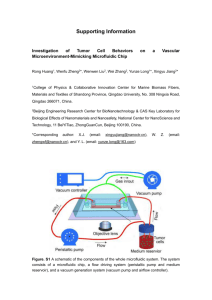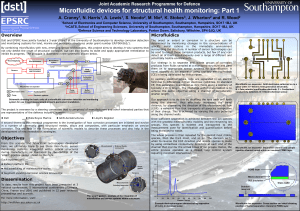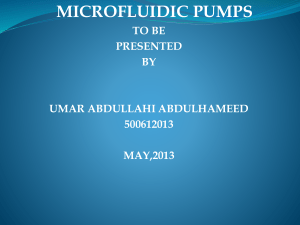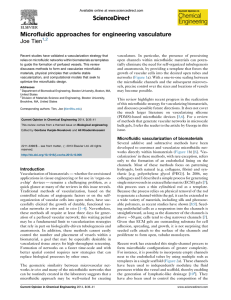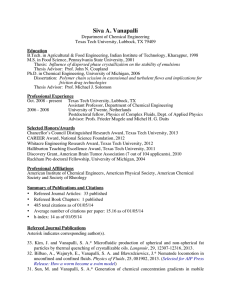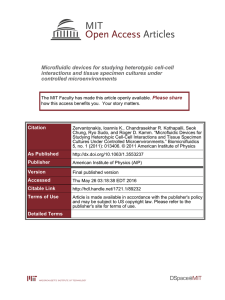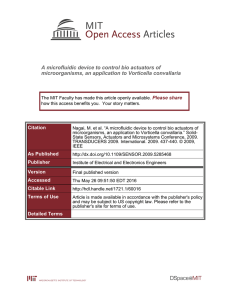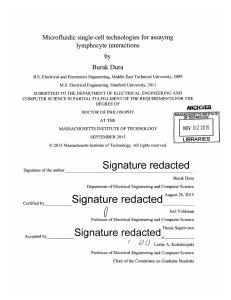DEVELOPMENT OF H-SHAPED MICROFLUIDIC DEVICE WITH
advertisement
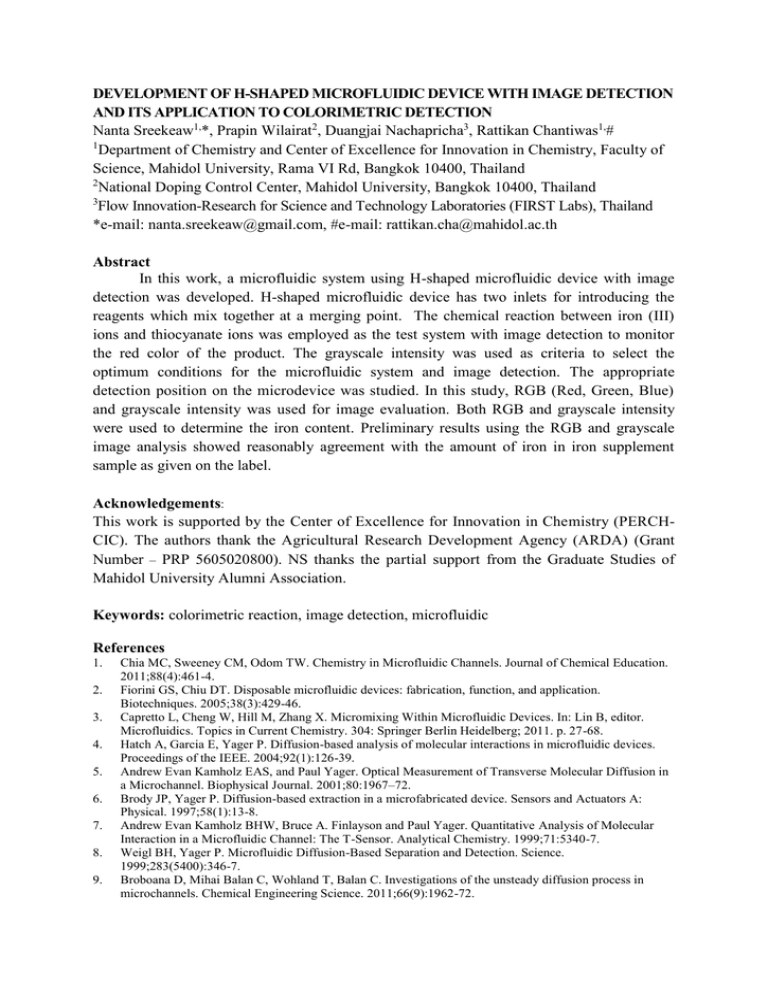
DEVELOPMENT OF H-SHAPED MICROFLUIDIC DEVICE WITH IMAGE DETECTION AND ITS APPLICATION TO COLORIMETRIC DETECTION Nanta Sreekeaw1,*, Prapin Wilairat2, Duangjai Nachapricha3, Rattikan Chantiwas1,# 1 Department of Chemistry and Center of Excellence for Innovation in Chemistry, Faculty of Science, Mahidol University, Rama VI Rd, Bangkok 10400, Thailand 2 National Doping Control Center, Mahidol University, Bangkok 10400, Thailand 3 Flow Innovation-Research for Science and Technology Laboratories (FIRST Labs), Thailand *e-mail: nanta.sreekeaw@gmail.com, #e-mail: rattikan.cha@mahidol.ac.th Abstract In this work, a microfluidic system using H-shaped microfluidic device with image detection was developed. H-shaped microfluidic device has two inlets for introducing the reagents which mix together at a merging point. The chemical reaction between iron (III) ions and thiocyanate ions was employed as the test system with image detection to monitor the red color of the product. The grayscale intensity was used as criteria to select the optimum conditions for the microfluidic system and image detection. The appropriate detection position on the microdevice was studied. In this study, RGB (Red, Green, Blue) and grayscale intensity was used for image evaluation. Both RGB and grayscale intensity were used to determine the iron content. Preliminary results using the RGB and grayscale image analysis showed reasonably agreement with the amount of iron in iron supplement sample as given on the label. Acknowledgements: This work is supported by the Center of Excellence for Innovation in Chemistry (PERCHCIC). The authors thank the Agricultural Research Development Agency (ARDA) (Grant Number – PRP 5605020800). NS thanks the partial support from the Graduate Studies of Mahidol University Alumni Association. Keywords: colorimetric reaction, image detection, microfluidic References 1. 2. 3. 4. 5. 6. 7. 8. 9. Chia MC, Sweeney CM, Odom TW. Chemistry in Microfluidic Channels. Journal of Chemical Education. 2011;88(4):461-4. Fiorini GS, Chiu DT. Disposable microfluidic devices: fabrication, function, and application. Biotechniques. 2005;38(3):429-46. Capretto L, Cheng W, Hill M, Zhang X. Micromixing Within Microfluidic Devices. In: Lin B, editor. Microfluidics. Topics in Current Chemistry. 304: Springer Berlin Heidelberg; 2011. p. 27-68. Hatch A, Garcia E, Yager P. Diffusion-based analysis of molecular interactions in microfluidic devices. Proceedings of the IEEE. 2004;92(1):126-39. Andrew Evan Kamholz EAS, and Paul Yager. Optical Measurement of Transverse Molecular Diffusion in a Microchannel. Biophysical Journal. 2001;80:1967–72. Brody JP, Yager P. Diffusion-based extraction in a microfabricated device. Sensors and Actuators A: Physical. 1997;58(1):13-8. Andrew Evan Kamholz BHW, Bruce A. Finlayson and Paul Yager. Quantitative Analysis of Molecular Interaction in a Microfluidic Channel: The T-Sensor. Analytical Chemistry. 1999;71:5340-7. Weigl BH, Yager P. Microfluidic Diffusion-Based Separation and Detection. Science. 1999;283(5400):346-7. Broboana D, Mihai Balan C, Wohland T, Balan C. Investigations of the unsteady diffusion process in microchannels. Chemical Engineering Science. 2011;66(9):1962-72. 10. Araújo AN, Gracia J, Lima JLFC, Poch M, Saraiva MLcMFS. Colorimetric determination of iron in infant fortified formulas by sequential injection analysis. Fresenius J Anal Chem. 1997;357(8):1153-6.
